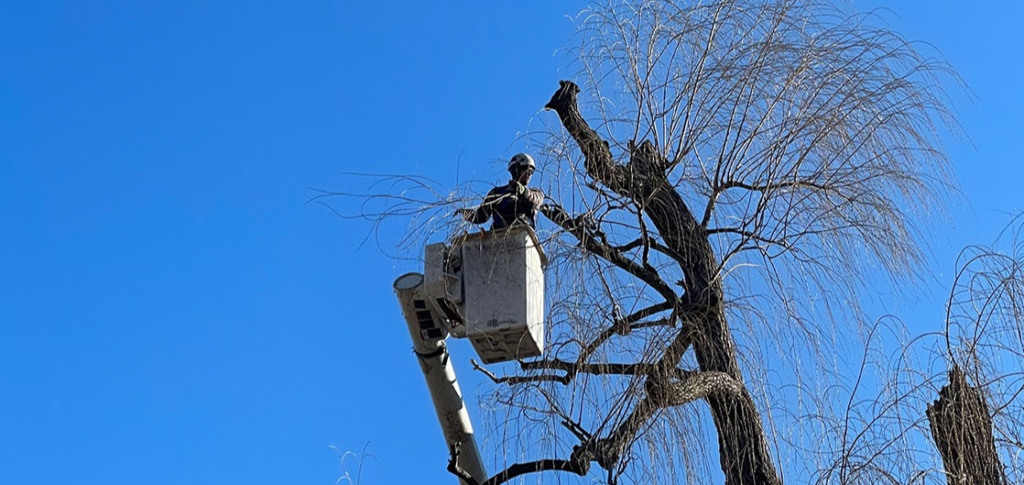
Each year, we prune the willow trees in the Public Garden to reduce the risk of trunk and branch failure. Willows are a fast growing species, and are considered high risk for this type of damage. The technique we use, called pollarding, while common in Europe, tends to raise some eyebrows.
The population density of seasonal crowds and physical activity around these trees heightens our awareness for safety. Visually, the crew inspects and prunes each willow branch using the technique of pollarding. Pollarding promotes callus growth. While you may normally associate them with foot troubles, tree calluses are actually beneficial to the tree. Calluses grow over and “cover up” old and damaged tree wood and replace it with new, healthy tissue. This healthy tissue allows for the production of the willow sprouts that beautifully line the lagoon each summer.
Pollarding removes all succulent growth in the targeted area. This succulent growth is “coppice” cut to leave ½ to 1 ¼ inch stubs. These stubs contain enormous energy to rapidly reproduce sprouts with abundant color which bloom each spring.
Large mature willow trees have numerous defects which, while difficult for a layperson to identify, are obvious to the professional arborist. Decisions to eliminate high risk branches are of utmost priority. While unsightly for a brief period, these cuts have to be done to ensure public safety. Ongoing tree risk assessment and modified pollarding keep our distinctive willow trees thriving in the Public Garden.

